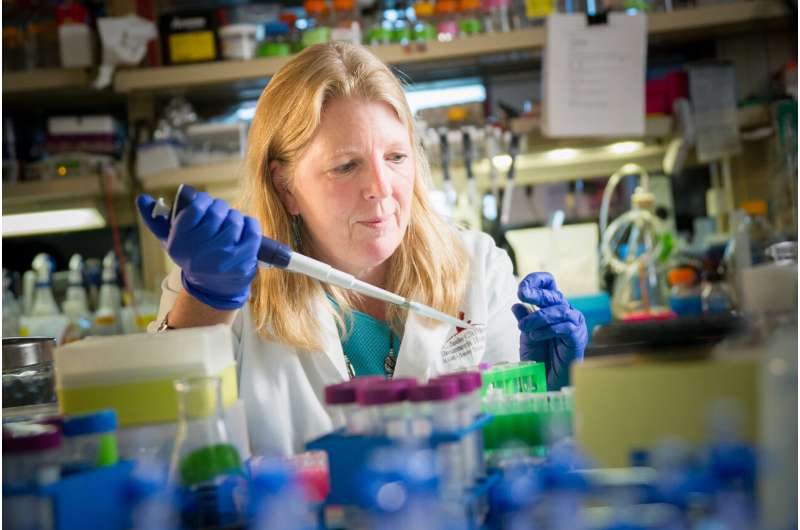Cytokine implicated in HLH treatment resistance

Scientists at St. Jude Children's Research Hospital, UCSF Benioff Children's Hospitals and Baylor College of Medicine are investigating how to best treat hemophagocytic lymphohistiocytosis (HLH), a rare immune disorder. Their work, appearing as an advance online publication today in Blood, details how combining two drugs may be a good treatment for HLH.
"For the last 20 years, treatment for HLH has remained a combination of the drugs dexamethasone and etoposide," said co-senior author Kim Nichols, M.D., of St. Jude Oncology. "But we know that many patients either do not respond to this regimen or later relapse, so we dug into the biology to come up with a different treatment strategy."
In HLH, the immune system becomes over-activated and immune cells produce cytokines, which are chemicals released into the bloodstream to try to recruit and activate additional immune cells. Patients with HLH can experience a cytokine storm syndrome where so many cytokines start circulating that they feed upon themselves to further drive immune activation.
There are several cytokines elevated in HLH patients. Some of these cytokines bind to receptors on the cell's surface. When that happens, those receptors recruit and activate Janus kinases (JAKs), which are signaling molecules.
A new strategy emerges
Previous research by Nichols revealed that the JAK1/2 inhibitor ruxolitinib had a positive effect in mouse models of HLH. By inhibiting the JAK/STAT pathway, ruxolitinib interferes with cytokine communication. Nichols and her team wanted to better understand the mechanism behind this and investigate whether any particular cytokine was more important to inhibit.
"We wanted to know whether any of the cytokines that are elevated in HLH contribute to dexamethasone resistance, and if so, whether blocking the signaling of these cytokines might reverse treatment resistance," said co-first author Katherine Verbist, Ph.D., of St. Jude Oncology.
The researchers' work in cell lines and mouse models determined that of all the cytokines elevated in HLH, interleukin-2 is critically important to driving resistance to dexamethasone. Interleukin-2 is produced by activated T cells and promotes their survival. The researchers showed that by blocking the effect of interleukin-2, the T cells can be re-sensitized to and destroyed by dexamethasone.
The researchers found that the combination of dexamethasone and ruxolitinib was significantly more effective in quelling the signs of HLH in animal models compared to treatment with either drug alone. The study provides additional evidence to support testing the combination through a clinical trial.
"We were able to take lessons learned from our studies of pediatric leukemia, which is also often treated with dexamethasone, and apply them to our study of cytokines in HLH," said co-senior author Michelle Hermiston, M.D., Ph.D., of UCSF Benioff Children's Hospitals. "Like in leukemia, we were able to show that a specific cytokine signaling through the JAK pathway could promote resistance to treatment."



















